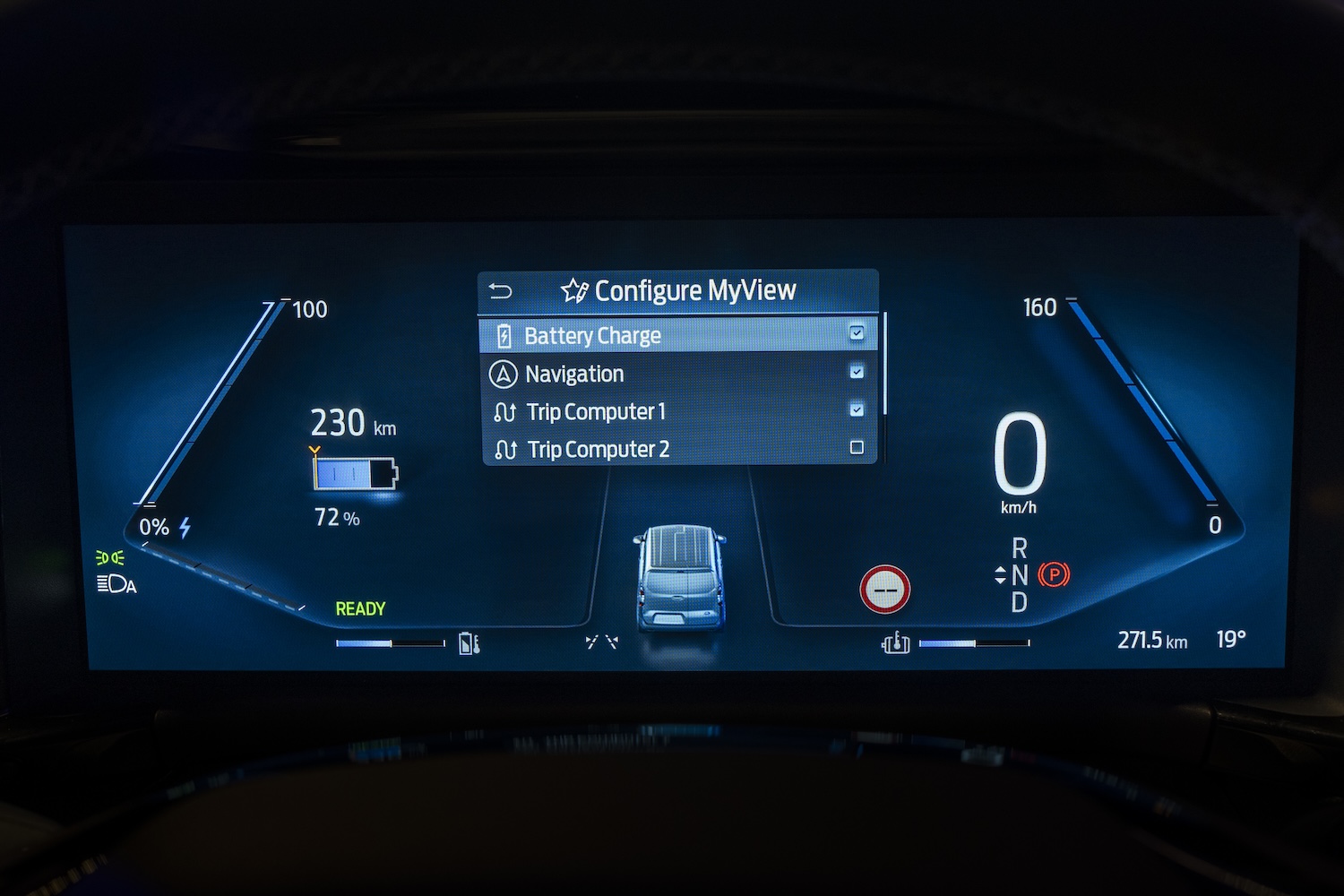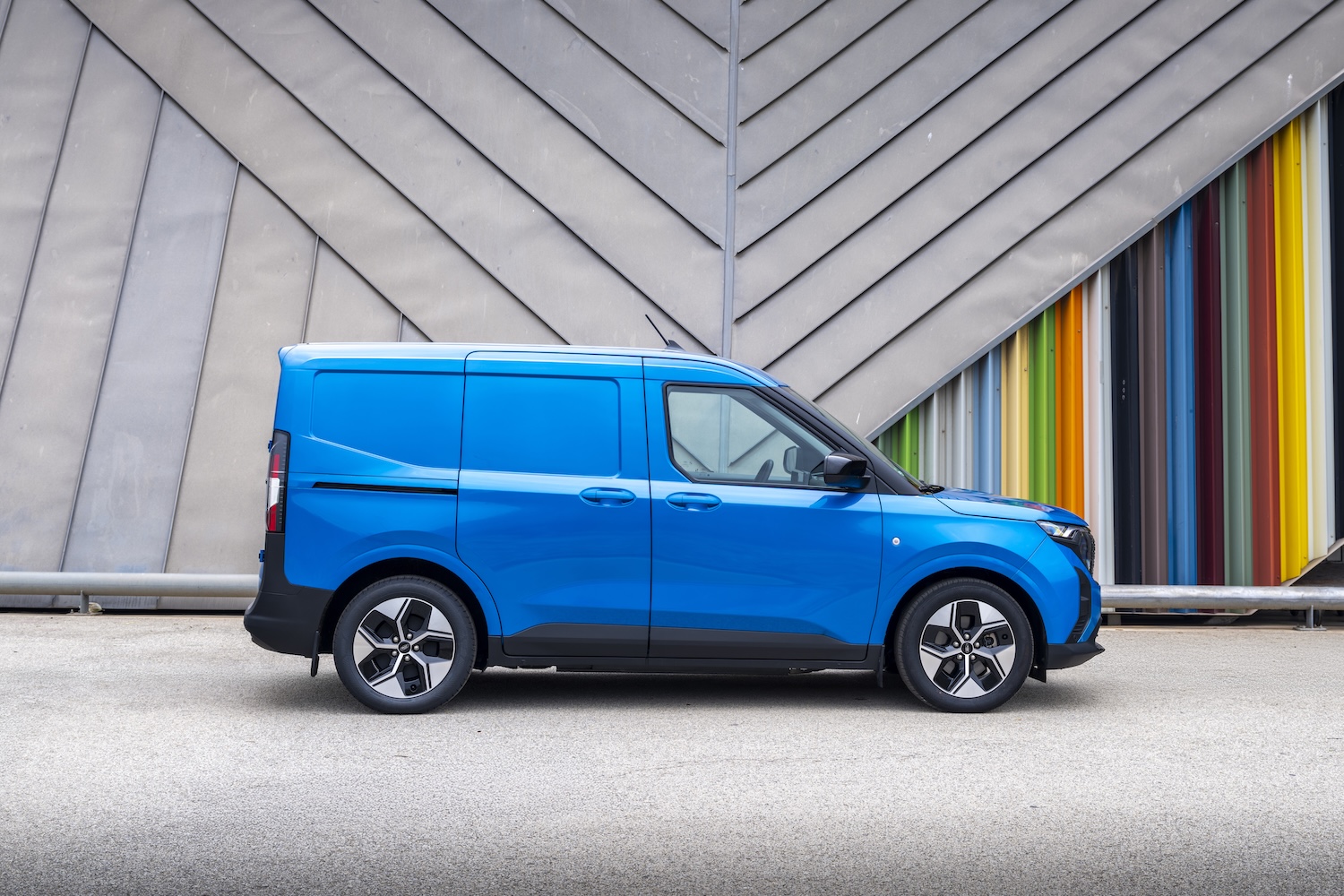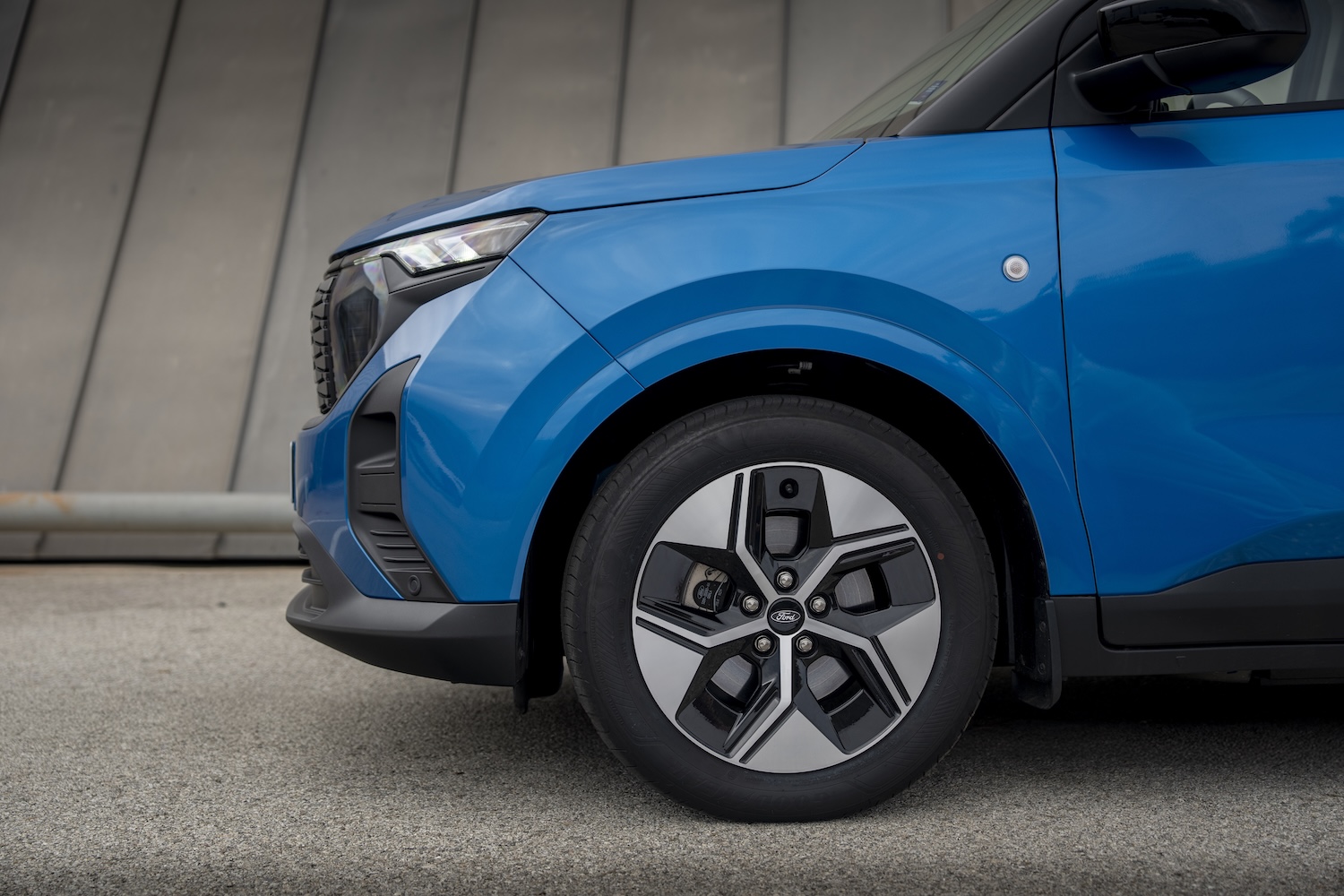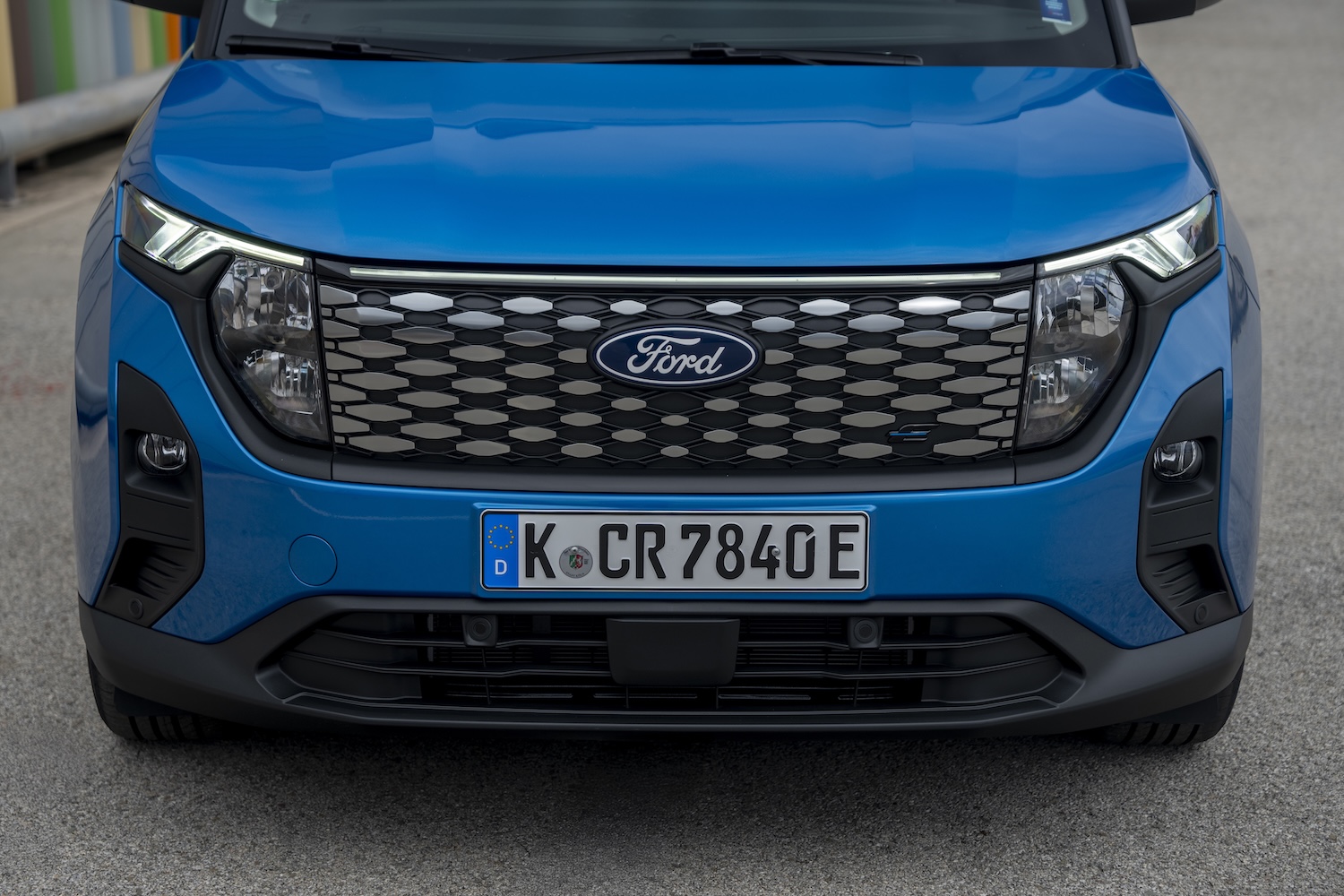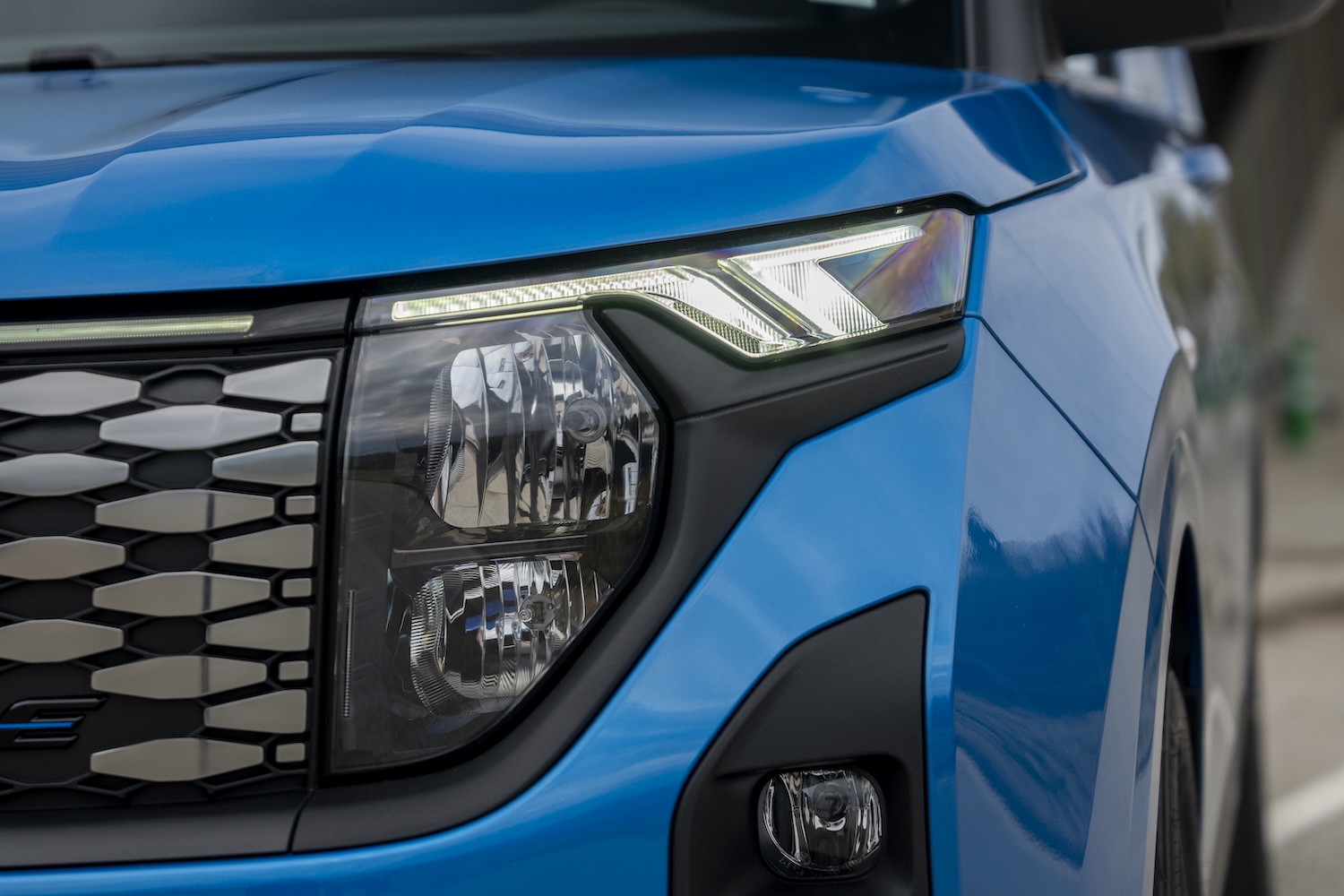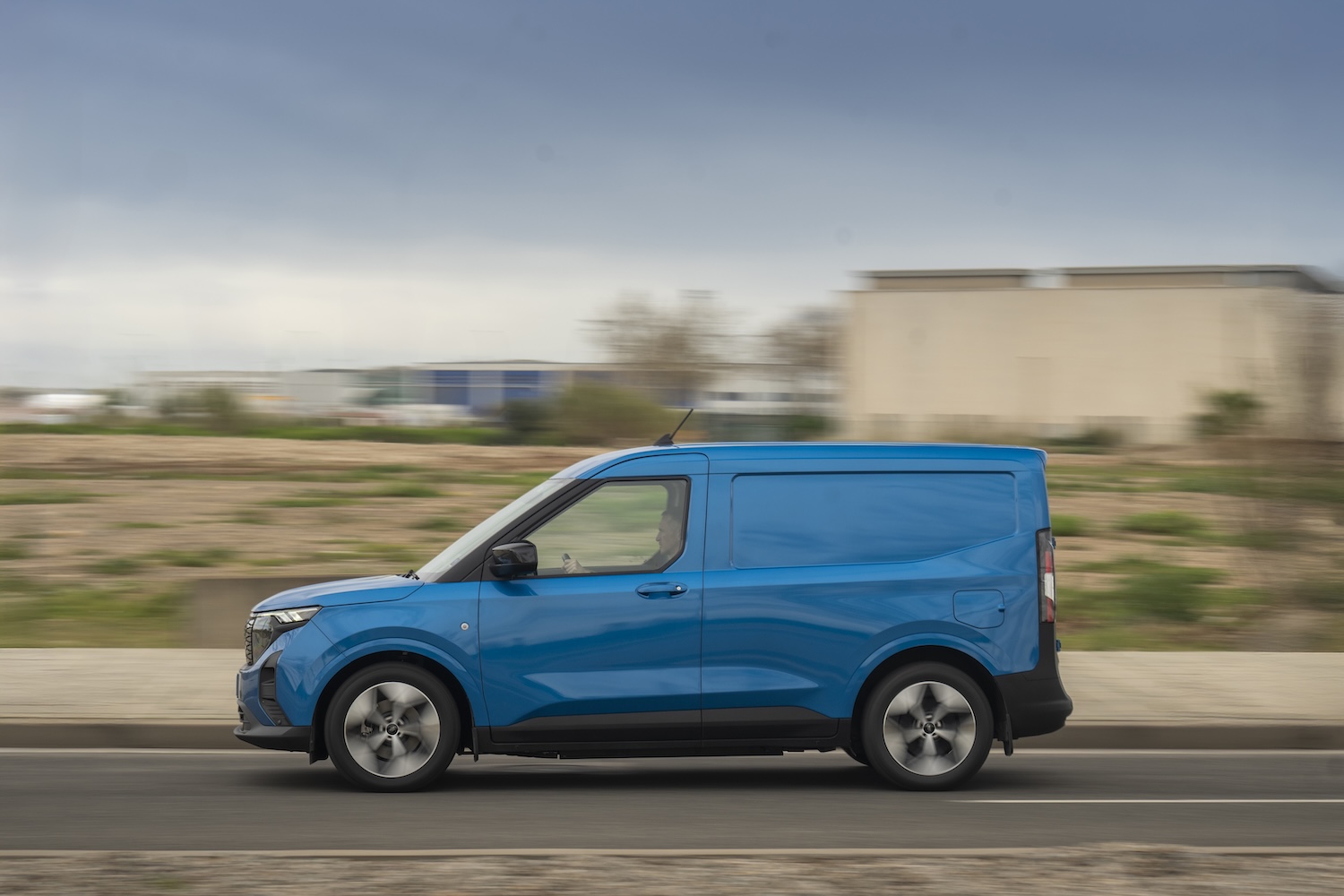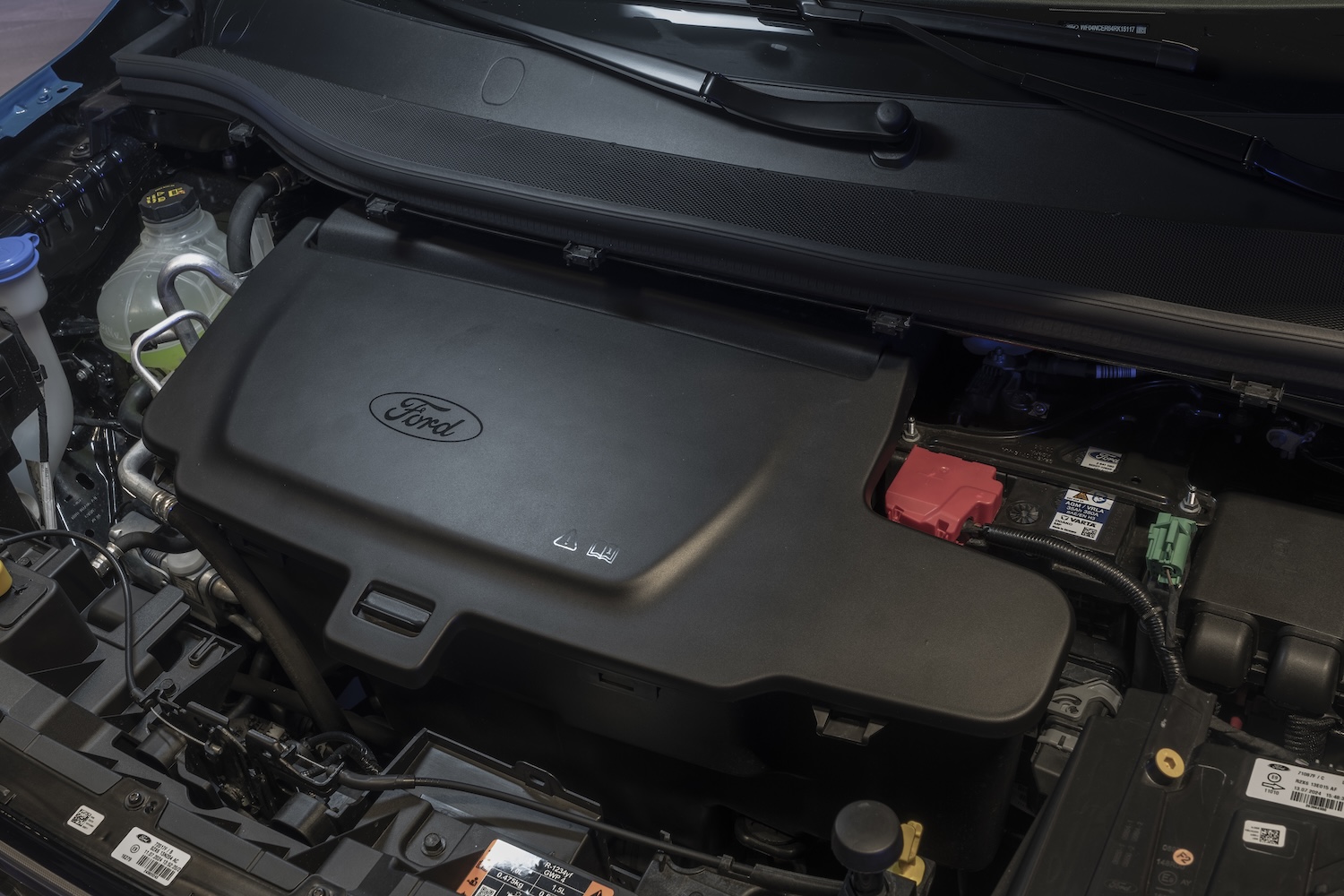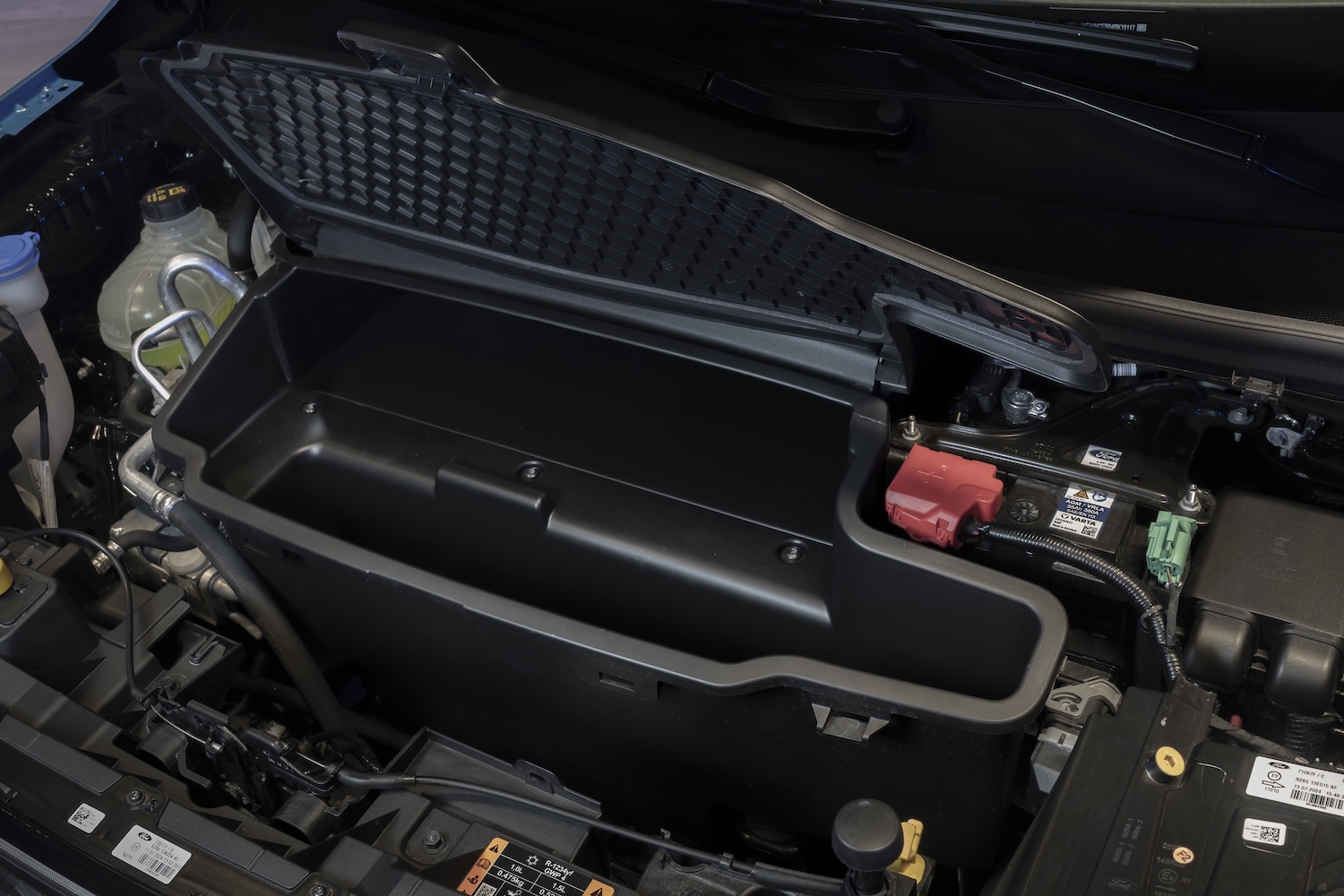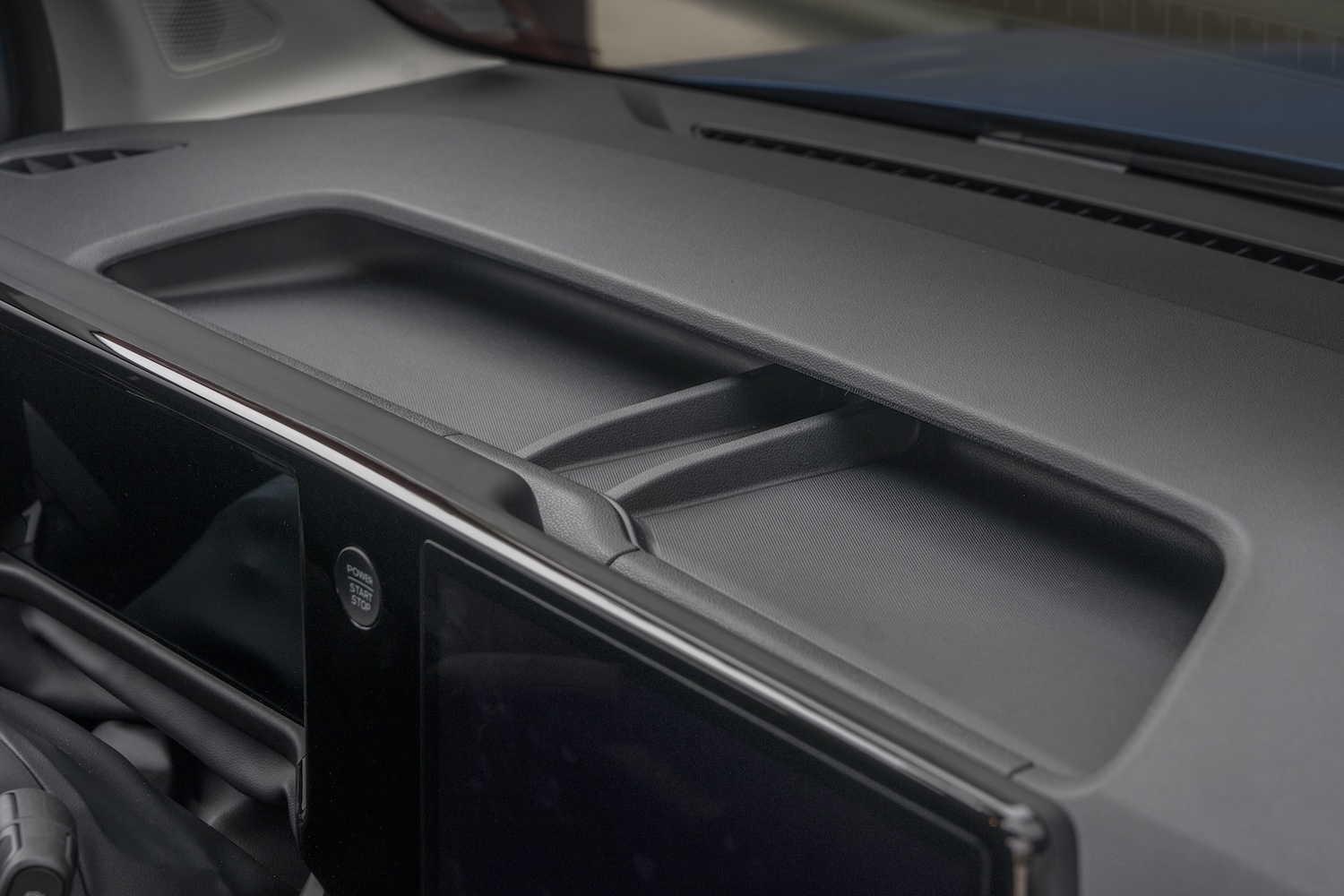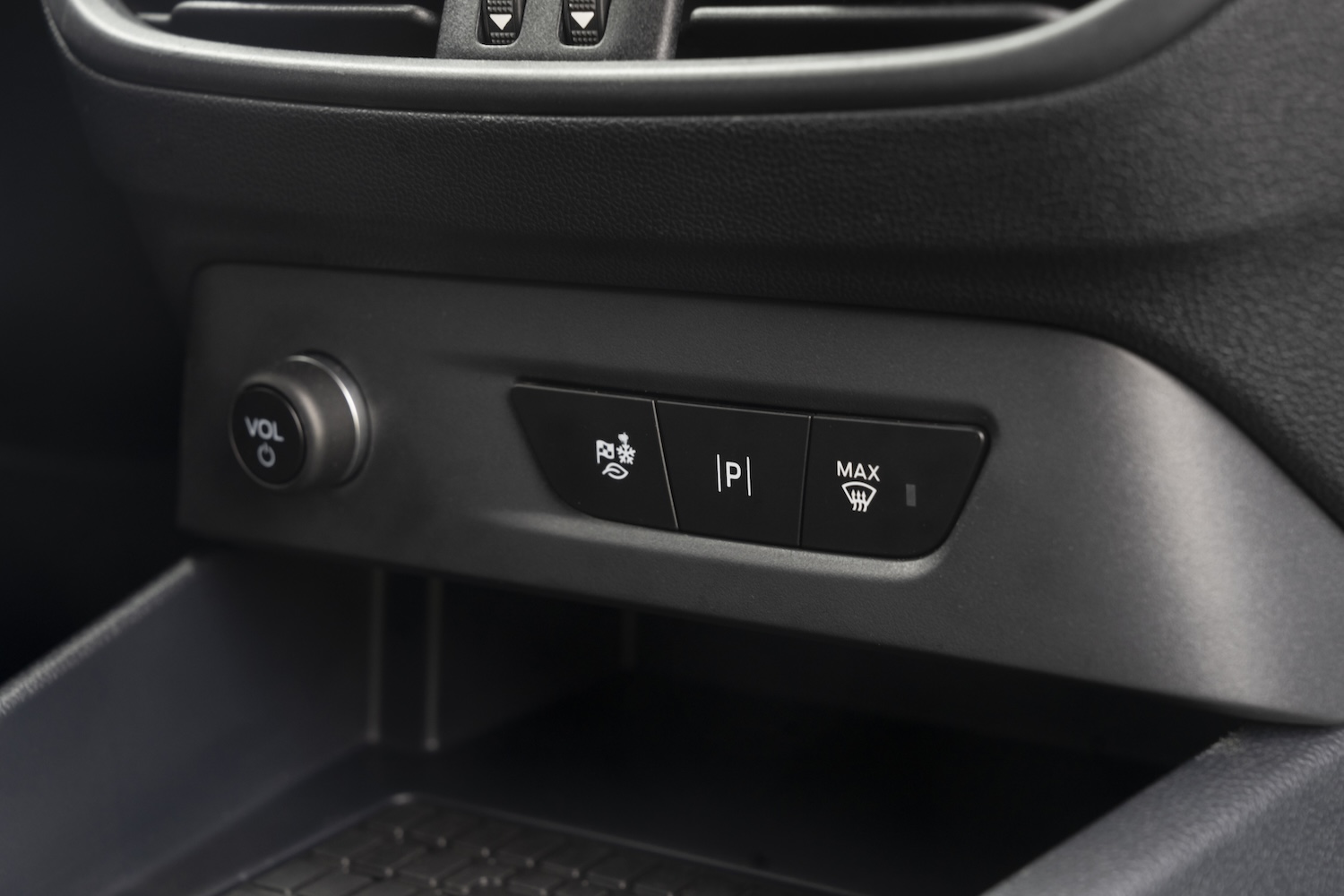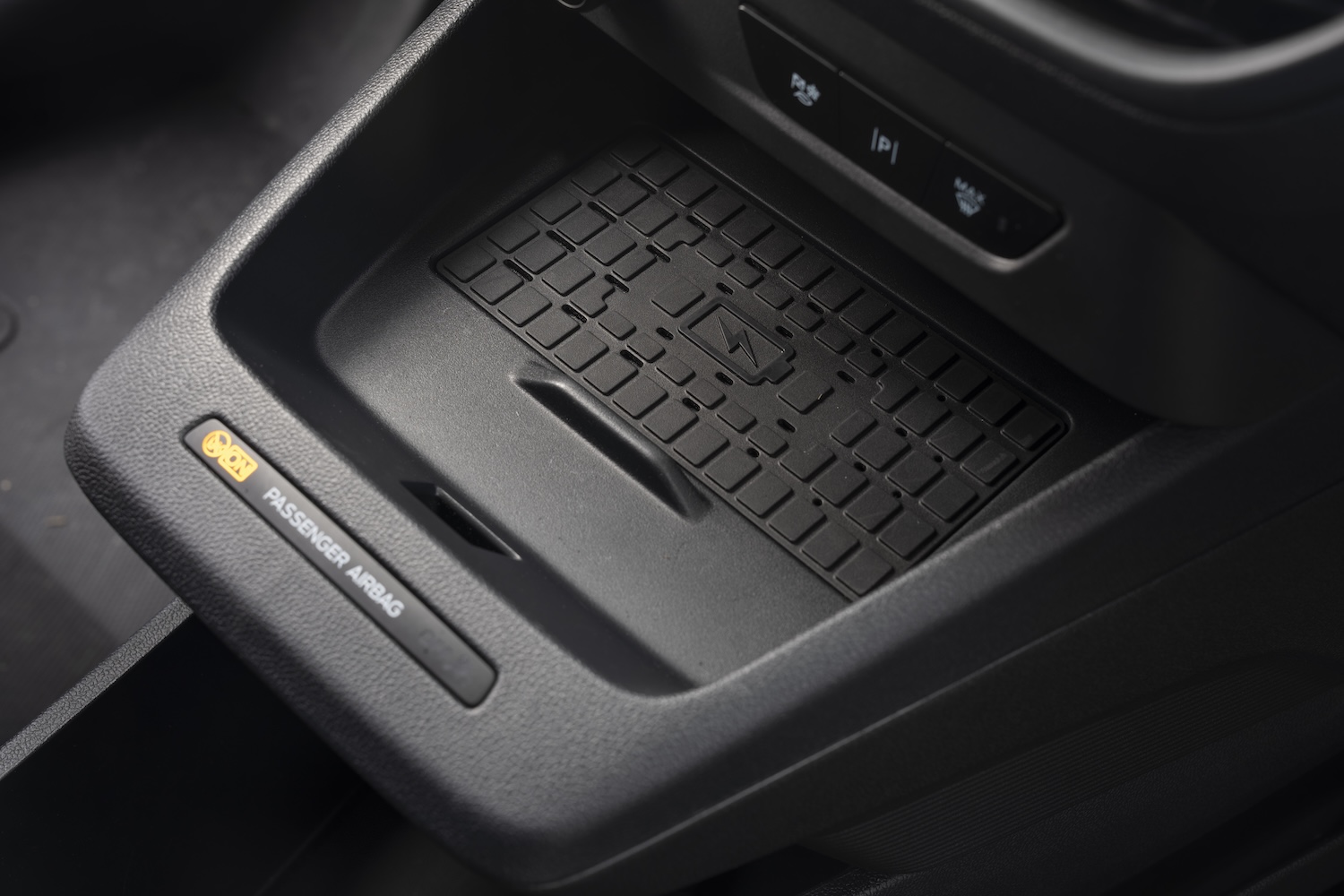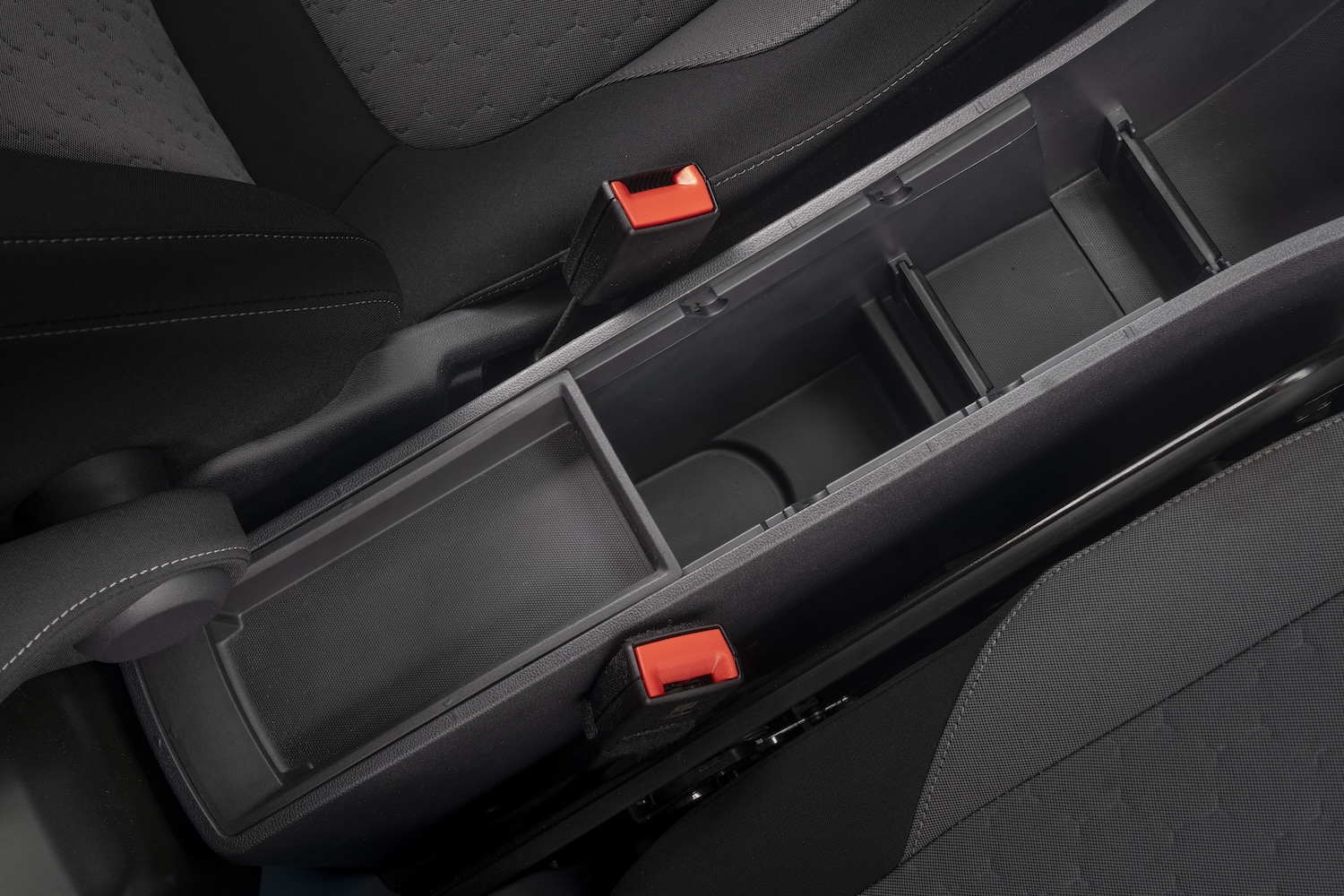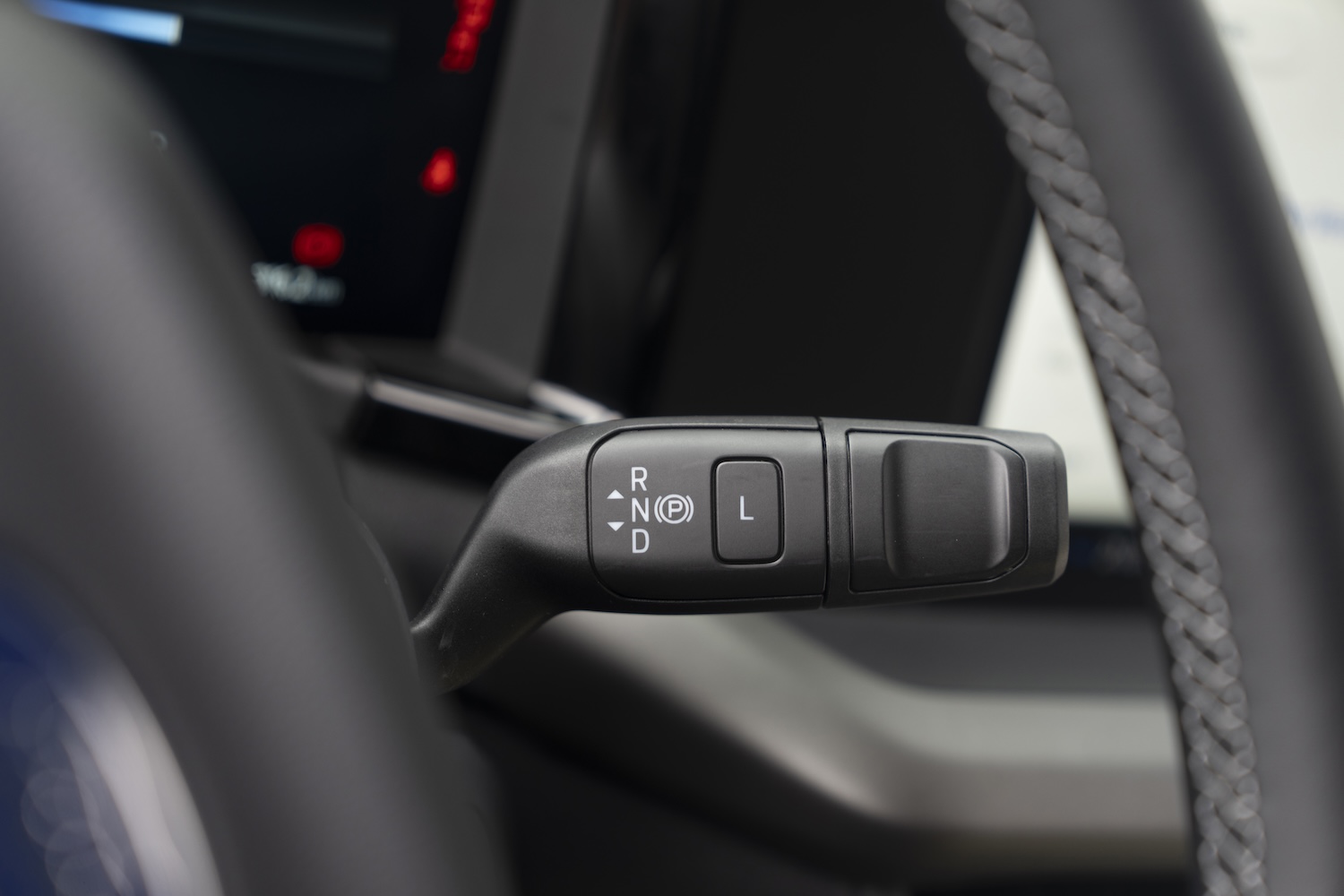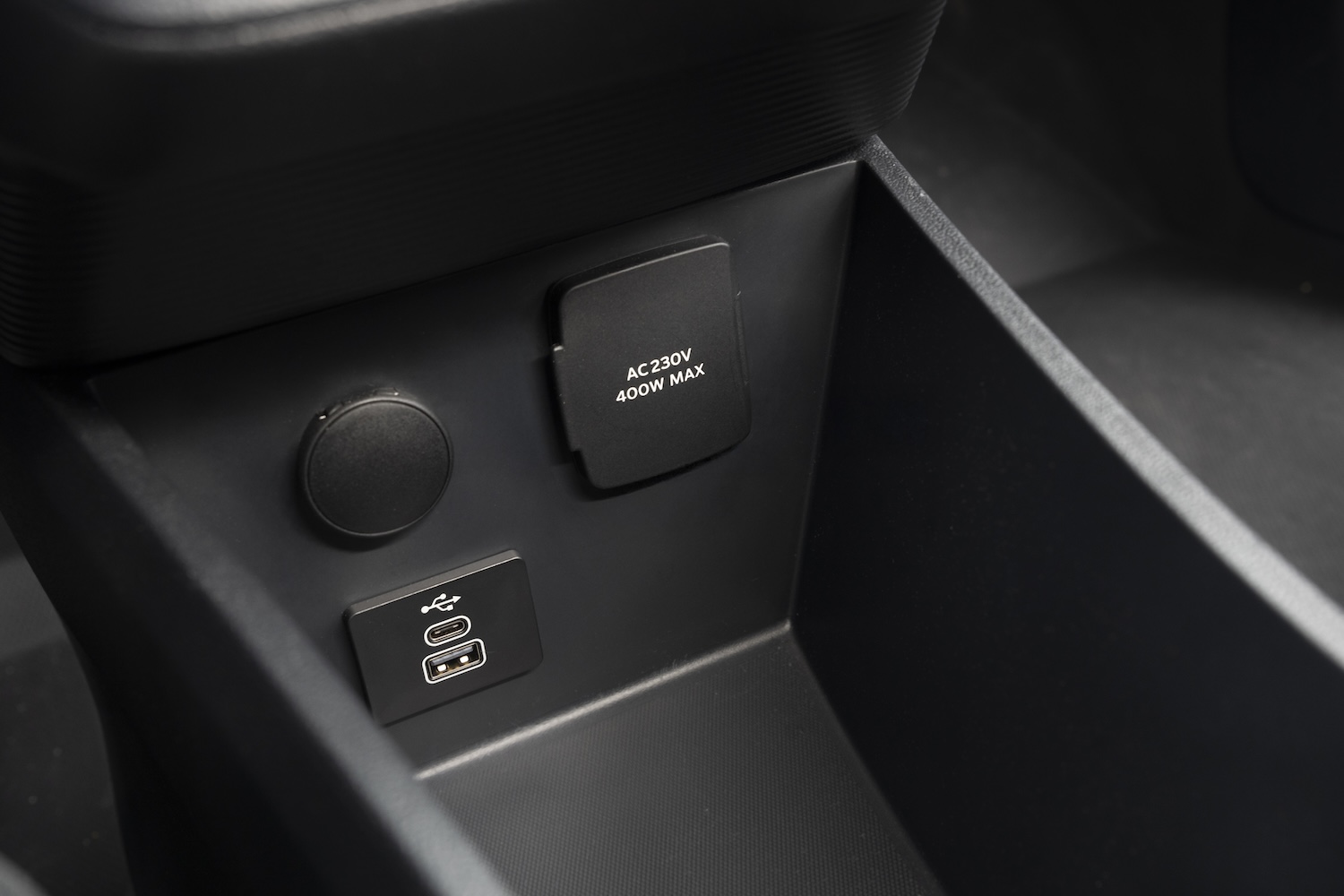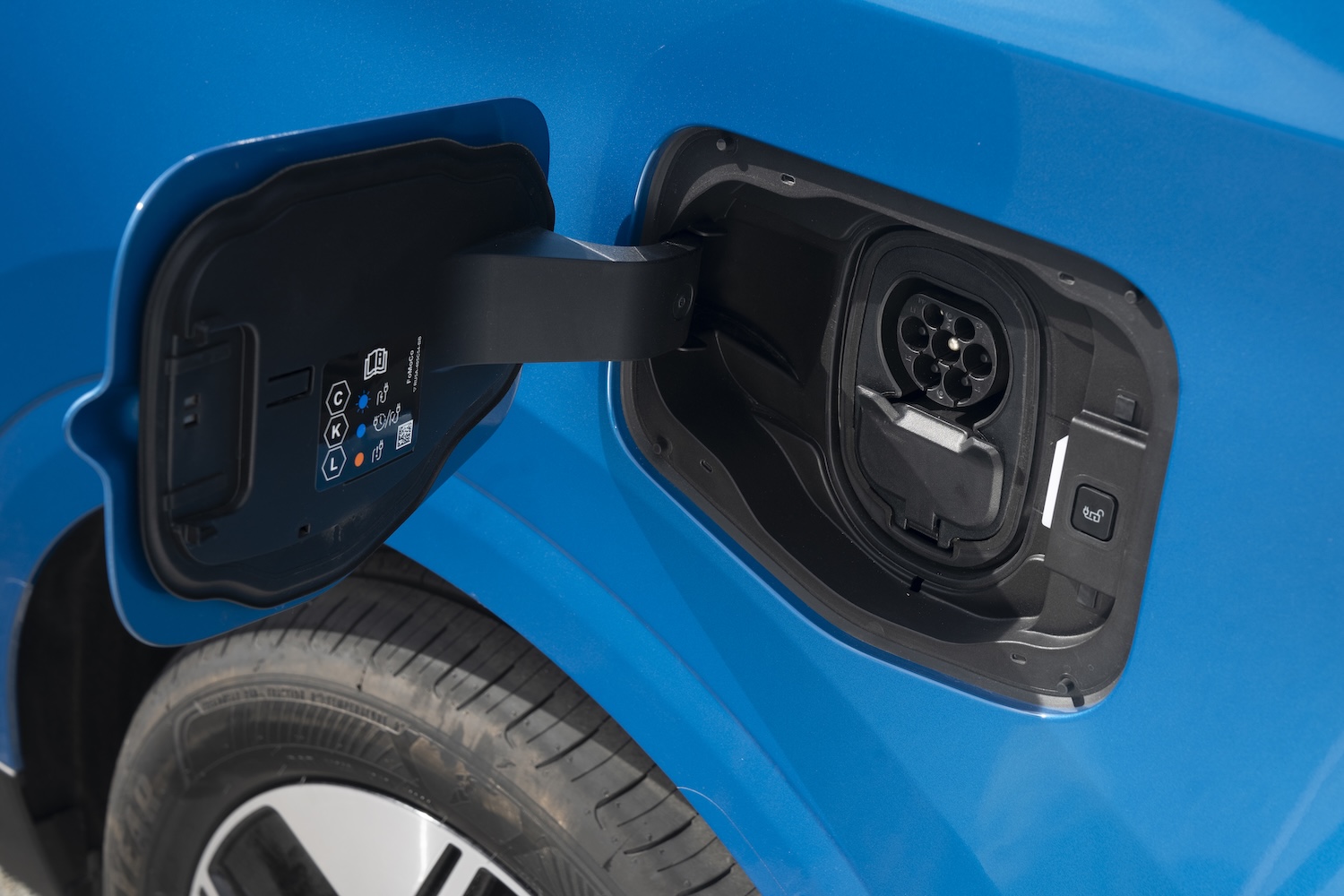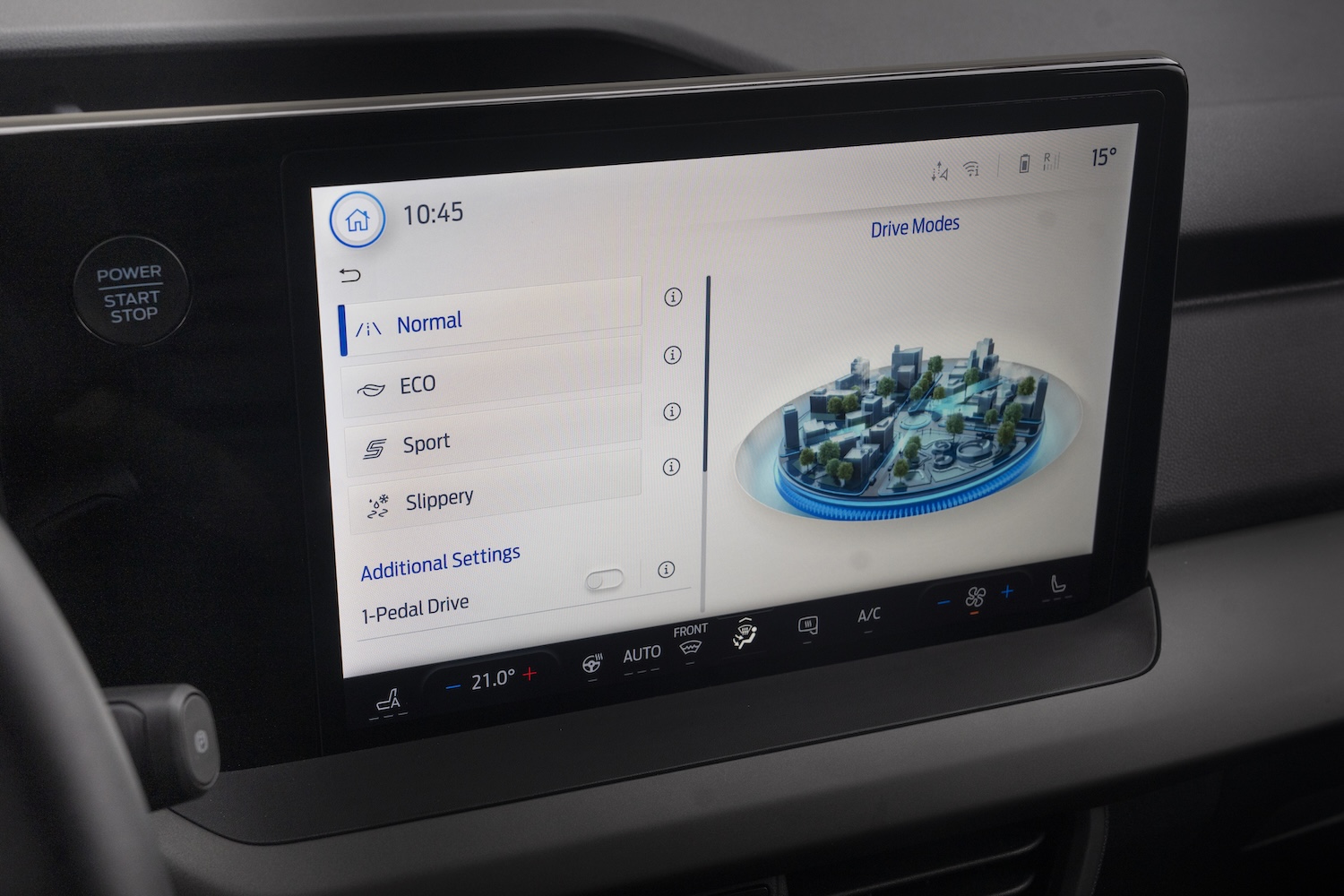Ford e-Transit Courier range
Unlike the larger Transit Connect, Transit Custom and Transit ranges, there is just one body style, length and height you can choose for the smallest Ford panel van, the Transit Courier. This carries over to the electric e-Transit Courier as well, which also has fewer trim lines available to it than its petrol and diesel relations – whereas the 1.0-litre petrol and 1.5-litre diesel are available in Leader, Trend, Limited and Active specifications, the e-Transit Courier is only available in the middle two of these.
There’s also no variation on the e-Transit Courier’s powertrain, with just a single 100kW motor powering the front wheels and supplied by a 43kWh battery pack, so essentially the only choice you have to make with this small electric Ford van is whether you want it in Trend trim or Limited spec.
The e-Transit Courier Trend comes with a better specification than equivalent petrol or diesel models, enjoying a coast-to-coast light bar in the front grille, LED daytime running lamps and taillights, front foglamps, electronic climate control, a positive-temperature-coefficient (PTC) heater, powered front windows, a 12-inch touchscreen display for the SYNC 4 infotainment, the front trunk cargo storage, and an armrest and lumbar support for the driver’s seat.
Upgrading to the Limited brings in some luxuries, not least the Winter Pack 2, which includes a Quickclear heated windscreen, heated front seats, and a heated steering wheel too – the latter item wrapped in premium ‘Sensico’ man-made leather. It’s then broadly a styling exercise, with the power-adjustable and heated door mirrors plus the door handles on the outside painted in body colour, while there’s a cover for the sliding side-load single door’s track and then silver door handles inside the cabin. A Limited also comes on 17-inch alloys as standard, while attractive body colours – including the Digital Aqua Blue you can see in the pictures – add an extra element of kerb appeal to a small van which is already said to have its design based on that of an SUV in the first place.
Finally, it enjoys wireless smartphone charging, front and rear parking sensors with a reversing camera, and a driver assistance bundle that includes nav for the SYNC 4, as well as adaptive cruise control, blind-spot assist, and an enhanced version of pre-collision assist, among more.
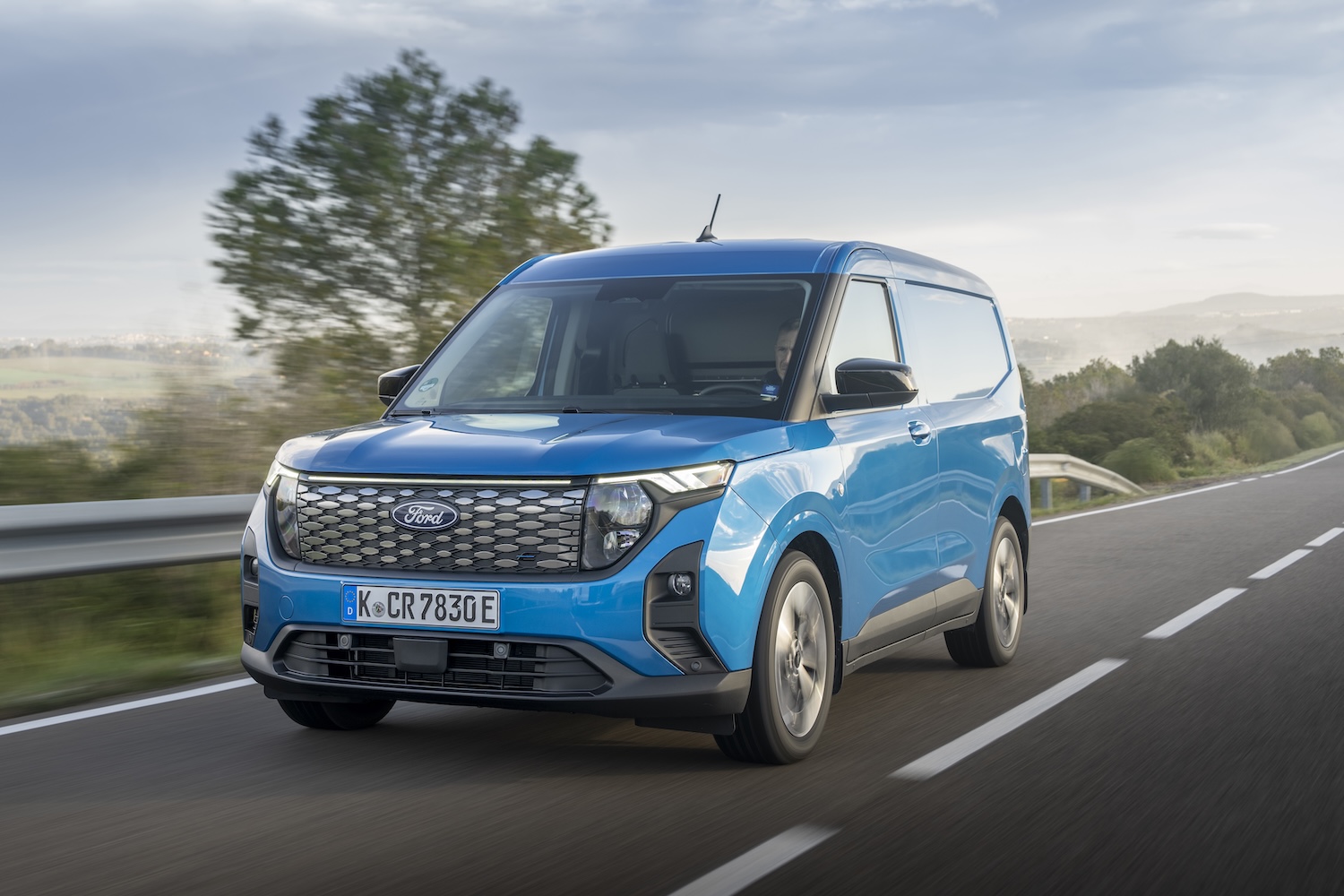
Ford e-Transit Courier interior
In the Limited, the e-Transit Courier provides a high-tech and comfortable cabin environment that’s most car-like. The twin digital displays, for the instrument cluster and main infotainment, look great and work slickly, even if the climate controls are all on the touchscreen; Ford does at least keep a strip of shortcuts permanently along the bottom of the display to make operating various comfort features in the Courier’s cabin a little easier when you’re on the move. Beyond the digital real estate, there’s plenty of good switchgear, including on the steering wheel that feels nice to hold, even if it’s basically a ‘squircle’ in Ford’s own words – we’re sure Fiat will be on the phone soon, to remind Dearborn that it was doing ‘squircles’ in the Panda donkey’s years ago.
Anyway, it generally all looks nice and feels largely excellent, although there are places in the cabin where the plastics do take on a rather hard-wearing, scratchy feel as this is ultimately a commercial vehicle at the end of the day. But, with lots of useful storage places and good visibility out for the driver, it therefore means our only real main complaint with the e-Transit Courier pertains to the passenger seat.
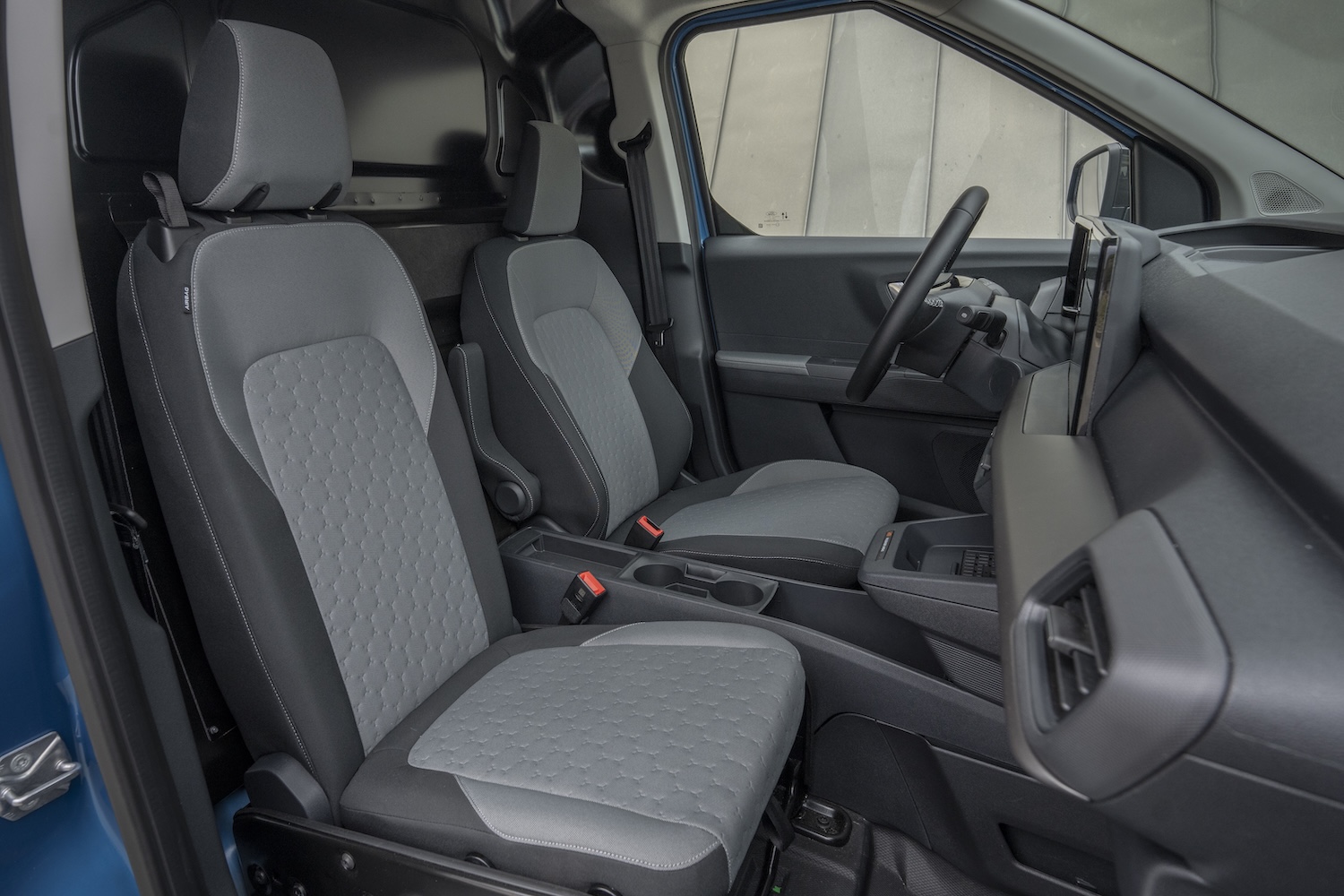
Our test van was fitted with the through-load system in the bulkhead, which does increase the load capacity of the Ford up to three cubic metres and also allows for longer items to be accommodated in its body, but it necessitates a very basic, very flat and very unsupportive second chair to be fitted in the cab. Sitting on it for any great length of time was uncomfortable, in all honesty, as it lacks for the adjustment and sculpting of the driver’s seat, and it even felt like its backrest was convex – almost as if it was permanently trying to tip its occupant out of the chair.
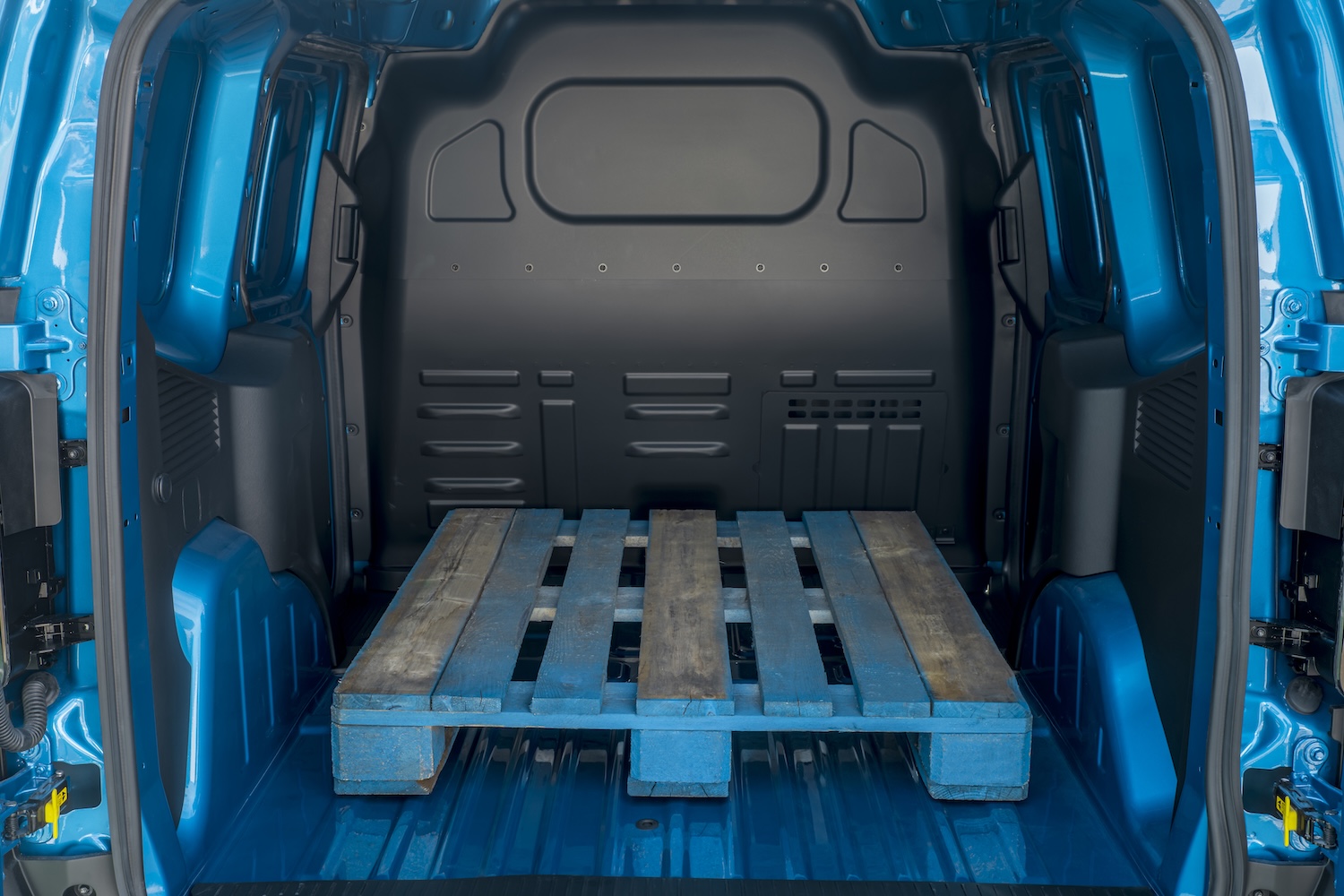
In terms of the cargo area, it is accessed by a single sliding side door and then a pair of asymmetrical ‘barn’ doors at the back of the van, so loading the e-Transit Courier up with goods should be no problem. Without the optional through-load system, you still get a load bay that can accommodate 2.91 cubic metres of cargo, weighing up to 701kg if necessary. The dimensions are also 1.8 metres long, 1.53 metres wide and 1.26 metres tall, so it’s a good, cube-shaped void back there that you can exploit if needs be.
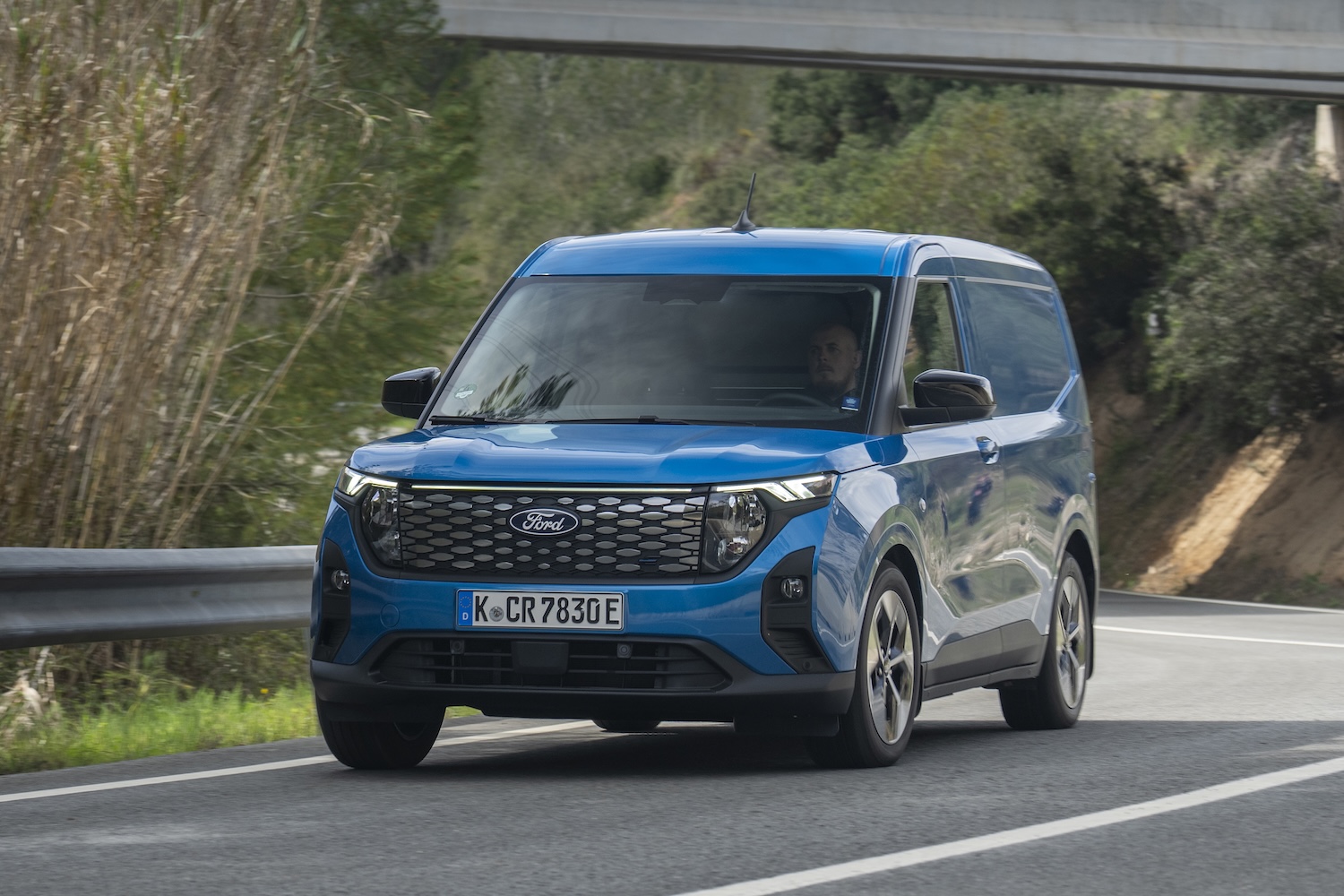
Ford e-Transit Courier driving experience
With 100- and 125hp versions of the Courier available in the petrol and diesel range, the 136hp e-Transit variant is therefore the most powerful model of the lot. It also has a thumping 290Nm of torque available from the instant you press the right-hand pedal, which is far more pertinent in a small van which, unladen, comes in at more than 1.5 tonnes for kerb weight.
It will therefore probably come as no surprise when we tell you that, from a driving perspective, the e-Transit Courier is easily the pick of the range. It’s so smooth and quiet to travel in, especially if you’re used to rattly old diesel vans, and not even the petrol siblings can match it for rolling refinement. It handles pretty well, as vans go, with pleasing steering, lots of grip and decent body control, while the ride quality is surprisingly supple too, with little crashing or creaking from the empty rear bodywork of the Ford van as it deals with lumps and potholes in the roads. Furthermore, once it is cruising at motorway pace, it really is quite easy to forget you’re in a panel van, so serene is the progress – it’s not until you look in your mirrors and see the expanse of metal down the sides that you remember this is a Courier and not a Kuga.
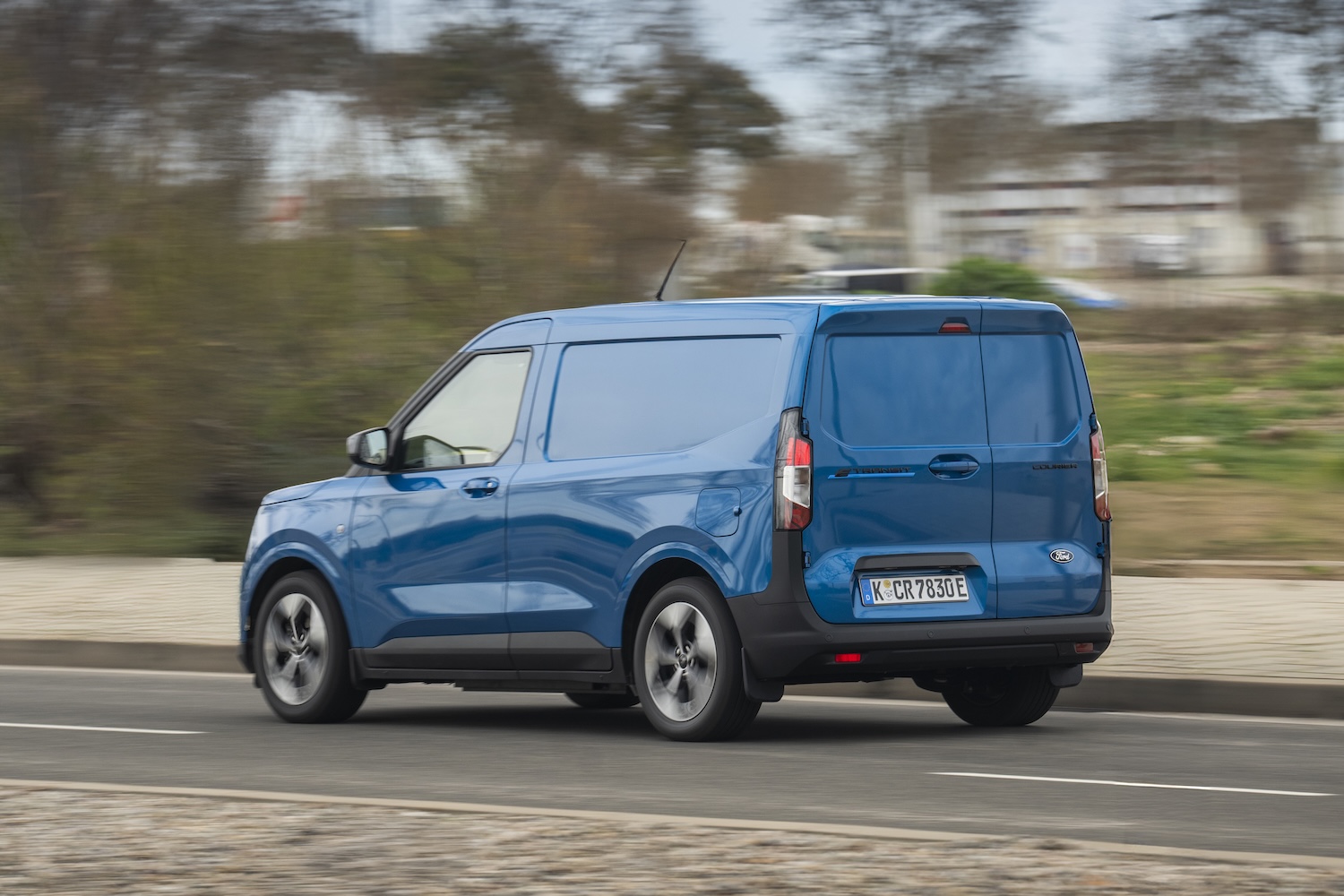
Granted, while the instant-access torque and single-speed reduction-gear transmission make the e-Transit Courier nippy and agile in town, allowing it to exploit gaps in traffic – particularly at fast-flowing roundabouts and junctions – that its combustion-powered relations simply couldn’t, you wouldn’t call the Ford van fast. Acceleration tails off noticeably after about 75km/h and the roll-on acceleration from 80-100km/h takes longer than you might expect for a reasonably muscular electric vehicle. Still, no van in this class makes significantly more power than the e-Transit Courier (some of its direct rivals actually have less power and torque), so the performance is perfectly adequate.
Ford claims the e-Transit Courier will do up to 291km on a charge as standard, although you can optionally fit it with a speed limiter which reduces its (irrelevant) top speed from 145- to 120km/h, and that will see the quoted one-shot driving range climb to exactly 300km. Charging speeds are quick, with a 10-80 per cent DC rapid session requiring only 26 minutes, while 11kW AC capability means that a full 0-100 per cent top up on a wallbox of that speed would require less than five-and-a-half hours; it’d be nearer six at 7.4kW. Brilliantly, the e-Transit Courier managed a deeply impressive 6.7km/kWh (or 15kWh/100km) across 90km of fairly testing driving (including mountain roads), so it looks like operators would have every chance of getting close to the quoted 300km figure in regular use.
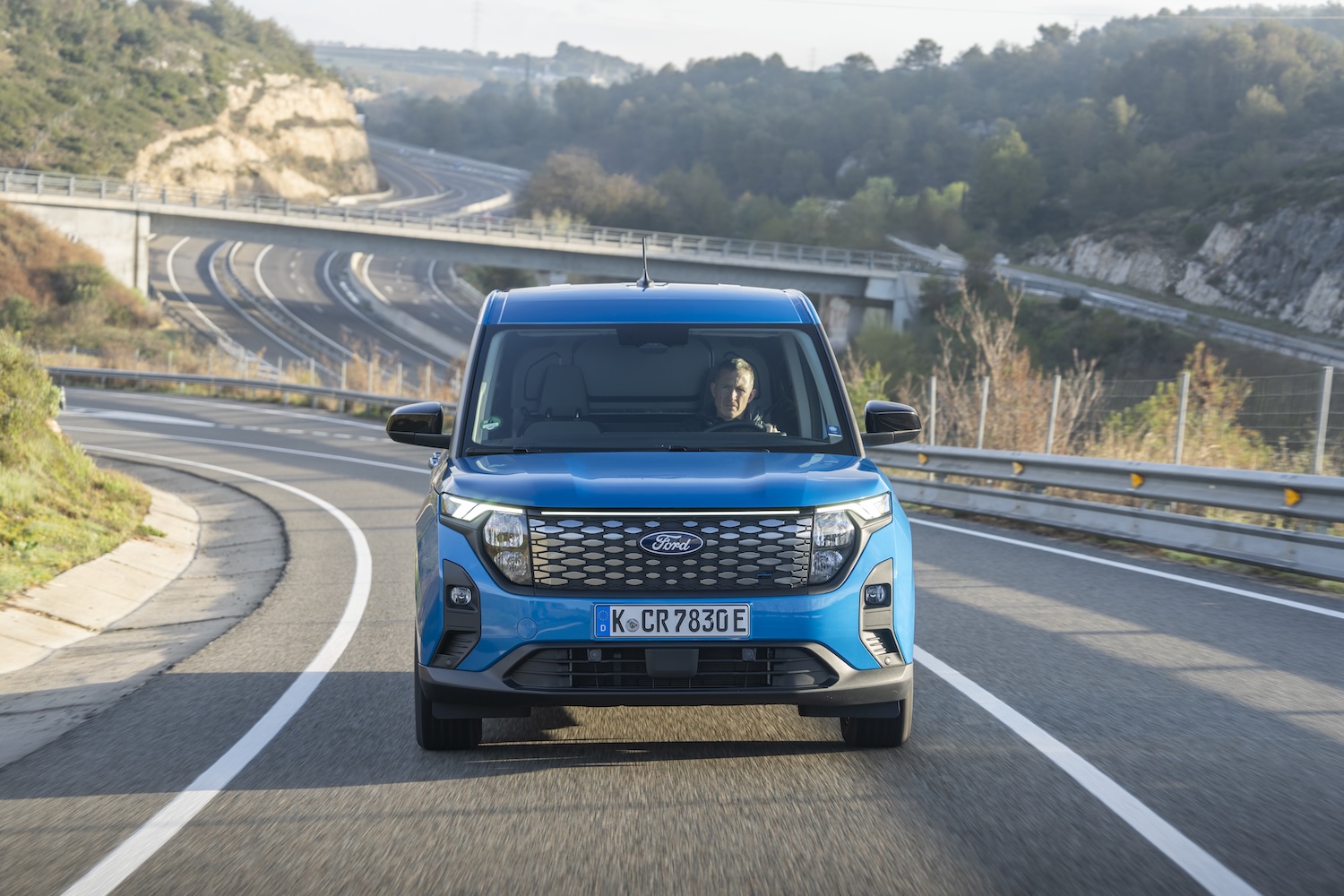
Alternatives to the Ford e-Transit Courier
The most obvious phalanx of rivals are essentially the same electric underpinnings with slightly different van bodies on top from all of the Stellantis range of manufacturers – namely, the Citroen e-Berlingo, the Peugeot e-Partner, the Fiat e-Doblo, the Opel Combo Electric Cargo and the Toyota Proace City Electric. These all use a 136hp motor, like the Ford, but have slightly bigger 50kWh battery packs, although they’re typically more money than the e-Transit Courier and not as pleasant to sit in. There’s also the Renault Kangoo E-Tech, the Mercedes eCitan and the Nissan Townstar EV, which – again – underneath are all the same van, just with different shells. All are great but all use a lesser 123hp motor and can only match the Ford’s 300km maximum range.
Clearly, compared to other small electric vans of a similar ilk, the Ford is competitively priced, but it looks dear to decarbonise your business fleet when the cheapest Transit Courier is around €19,000 excluding VAT, while the electric model begins from €34,640. However, Ford does say that fleets switching to the e-Transit Courier can expect 35 per cent reduced maintenance costs in the long term, so it may just be a matter of time to recoup to extra outlay of the electric van and break even financially, depending on your fleet’s monthly usage levels.
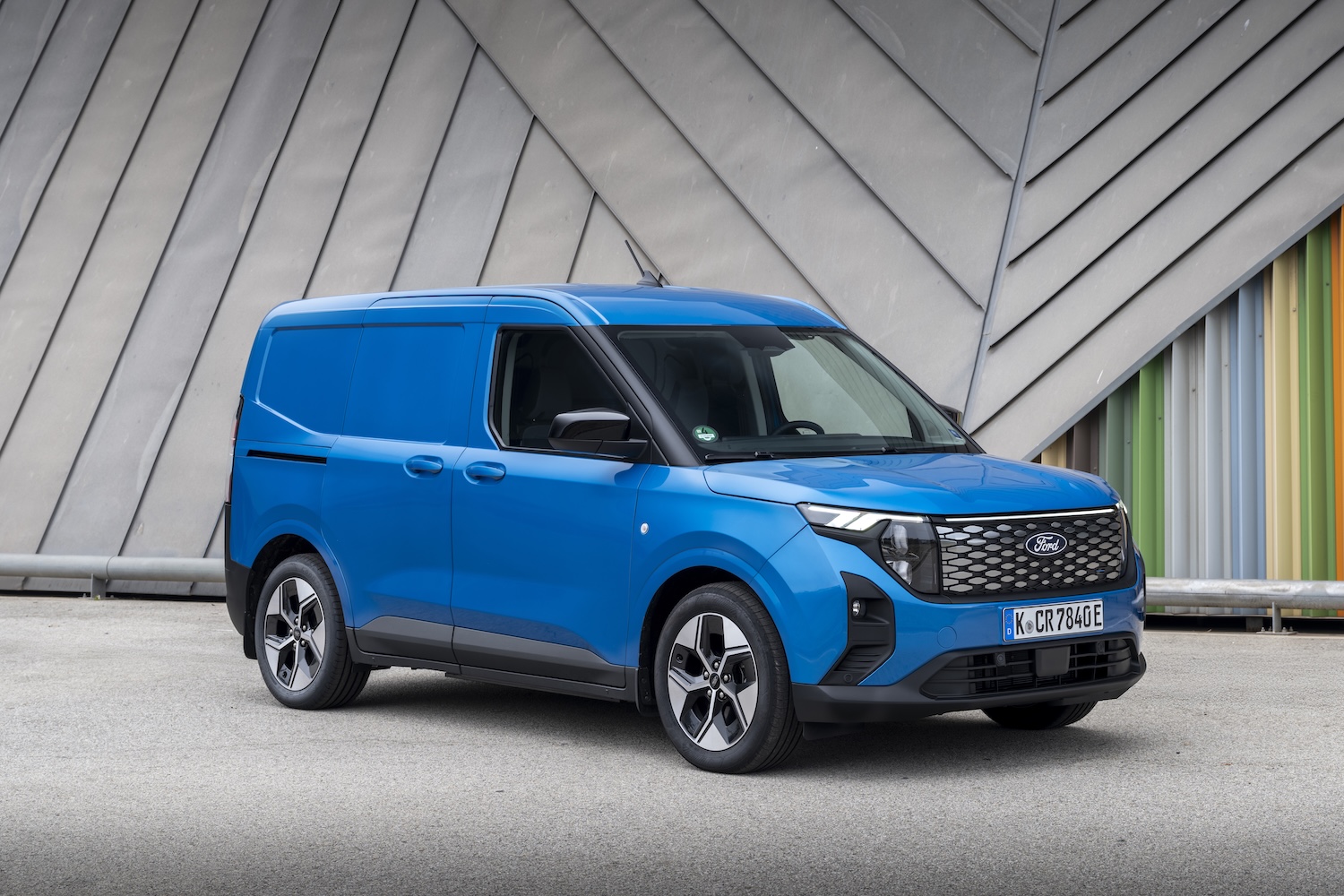
Our verdict on the Ford e-Transit Courier
Aside from the uncomfortable passenger seat, a few basic plastics in the cabin and (maybe) the lack of different body lengths and heights, the new Ford e-Transit Courier is a brilliant addition to its commercial range. It has enough one-shot driving capability to make for a great, low-running-cost multidrop vehicle in urban areas with emissions restrictions, and its quality cab, classy driving manners and useful load space further ensure it is one of the more desirable compact panel vans out there. If you can afford to transition to electric vans from petrol and diesel ones, you could do a lot worse than the e-Transit Courier Limited, that’s for sure.


